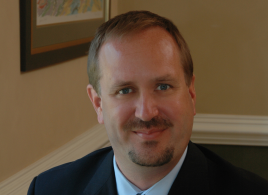
Jay Merkle was hired by Supernal to serve as Senior Director for Regulatory Affairs.
Supernal is a U.S.-based subsidiary of Hyundai Motor Group seeking to certify its electric vertical takeoff and landing (eVTOL) urban air taxi with the FAA by 2028. Jay Merkle, who served for three decades at the FAA, including a four-year stint as Executive Director for the agency’s UAS Integration Office, was hired in February to be the company’s Senior Director for Regulatory Affairs. In a recent interview, Merkle sat down with the AAM Report to discuss his views on eVTOL integration and how he plans to draw on experience gained at the FAA to guide Supernal in his new role. A partial transcript follows:
AAM Report: What attracted you to Supernal among the ranks of eVTOL companies out there?
Merkle: Supernal is taking a very holistic view of aviation that is not only about the eVTOL aircraft but also the supporting ecosystem–everything from ground infrastructure to ATM [air traffic management] integration, policy and regulatory aspects and even down to public acceptance. That holistic approach is very important to me because of my background at the FAA, where my most recent experience involved the challenges that new entrants face in trying to get into the National Airspace System. But even traditional aviation is a complex system and every new change requires a holistic view of how you bring that about. So, having dealt with things from a regulatory standpoint related to new entrants, ground infrastructure and ATC [air traffic control], I felt that coming to Supernal was the best fit for all those skills. Put another way, Supernal’s view of this holistic environment was exactly where I wanted to be.
How confident are you in the FAA’s ability to certify eVTOLs and get operating rules into place in time to enable entry-into-service by mid-decade?
I’m confident that the FAA will meet the challenges ahead of them. Over a century of tackling challenges related to innovation, the FAA has demonstrated time and time again that they're up to the challenge. Aviation is not just the regulator or the manufacturer or the operator; it’s very much a team sport where everyone works together. The FAA needs the industry to help them understand what technologies we’re bringing forth, how it fits into not only existing regulations, but where we need new regs. I believe it’s a critical time in aviation’s history. I expect we will meet all those barriers, but it’s not going to be an easy job. It’s going to take all of us focused on the safe integration, ensuring we aren’t causing noise or other environmental concerns, and making it affordable for people to use.
What is the biggest challenge facing the FAA?
I think it’s the same challenge that all new entrants face. The rules, as they evolved, assumed what we now call traditional aviation, and those assumptions don’t fit with either the technology or the way those transportation services will be delivered. So, the biggest challenge is always how best to take the safety principles that were used to develop those regulations over time and adapt them to the new technologies to ensure we continue to maintain that gold standard of safety. Also, with drones, one thing that slowed us down was security issues, and now we have interagency working groups working to solve that, so hopefully we do not face those same issues with interagency coordination that we faced with drones.
How do you think about the challenge of shared airspace with drones and other aircraft?
The integration into the airspace is definitely one of the main challenges for the entire industry. The real challenge is that we don’t share the airspace–it’s one airspace and it’ll never be different airspaces. Everybody has to operate in the same airspace—and so it will take time to evolve the procedures and structures and all that. We’ve seen airspace integration done multiple times and cities and regions addressing access or trying to minimize noise. So, while it’s a challenge, it’s not unsurmountable. It’s just going to take work and cooperation, not just with the operators and the FAA, but also with local communities.
Does the FAA have all the resources it needs?
In terms of resources, I think the FAA reauthorization and budget processes are already working on identifying and obtaining those resources, and I think bot the FAA and industry have been active in ensuring that they make those needs known. Now, in terms of public investment, state and local communities and private entities, will definitely need to make parallel investments to make this come about.
Any final thoughts?
Sure. It’s a very exciting time to be a part of aviation. It’s a very important transition that we’re going through. Aviation is going to become much more personal and much more a part of everyone’s life in a way that is very different from having to go to an airport and deal with the time and hassle related to traditional aviation. So, I’m very excited to be at Supernal and also at this point in aviation history. It’s really a great time to be involved.





